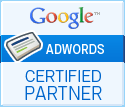SEO is a multi-faceted process that you have to tackle from several different angles. SEO is basically comprised of Onsite Optimization and Offsite Optimization. To truly be effective at SEO you have to tackle it on all of these fronts simultaneously – they each have their own importance and relevance to your overall goals of ranking well in the SERPs (search engine results pages). You can’t expect to be successful if you ignore any one portion of the complete picture.
Onsite Optimization involves changing and optimizing structures and content that are internal to your pages and website – things that you have direct control over. In essence, onsite optimization is how you organize your site for presentation to the search engine robots which spider through your entire site content. The goal is to present a very organized and well defined structure to the search engine so that it can easily index your site. The more organized and well-defined your site structure is, the higher you will be rewarded in terms of SEO performance and SERPs performance. So in order to play by the rules, you first have to understand what they are.
Some of the main components of onsite optimization include title and meta tags, heading element and content structure, keyword density, search engine friendly URLs and image optimization. There are other components as well, but these are the core elements of onsite optimization. Some of these items may seem foreign to you, and if so, you may need to do some brush up research on basic HTML as that is beyond the scope of this article. TITLE, DESC and META tags are HTML elements that define some of the structure of your page document. The most important, by far, is the TITLE tag. It tells the search engine the main topic of your page and should be optimized for the keywords that you are targeting. Likewise the DESC tag and META tags also provide information about the page and should be keyword optimized (though they are not generally visible). The META tag used to carry a lot of weight for SEO, but it is much less important today though it is still used and referenced.
Heading element and content structure is also important, though to a lesser degree. Think of an indented outline structure – that is what the heading elements (H1 thru H6) due. They organize the content and prioritize its importance in order of relevance – from most relevant (H1) to least relevant (H6). A normal structure that is SEO optimized would likely contain the primary keyword as part of the TITLE tag and then, in order of relevance, lesser keywords in the heading tags. Search engine friendly URLs are, just behind the domain name itself, in terms of their importance. Keyword optimized URLs that are properly formatted for the search engine to easily parse them are crucial to your page’s ranking. As an example of a poor URL you might see something like this:
http://mysite.com/ref/prod/jun_2004/archive/prodlist.asp?item=17&view=l&...
There is very little meaningful data in this URL structure. However, a URL like this:
http://mysite.com/green-day/lyrics/time-of-your-life.html
is very clear to the search engine and will give you very good SEO performance for the included keywords. Don’t overlook this very simplistic yet powerful technique for onsite SEO optimization. Combine good URLs with well researched TITLE tags and you have made a huge improvement already.
The last part of onsite optimization for SEO purposes is your images. Most people think that Google ignores images and just looks at the text – but this couldn’t be farther from the truth. Go to Google and look at the top set of option links. The very second link is to “Images” – meaning that they are second in Google’s priority list only to textual content. They rank above even video, maps and news, among others. In other words, Google does pay attention to images and how they are identified in your pages – so you should too. To optimize your use of images there are some basic rules to adhere to. First of all make good use of ALT and TITLE tags for your images. You can put keywords in them, but make sure they are appropriately titled – do not just stuff keywords into these tags, Google will notice. An often overlooked tactic of onsite image optimization is the actual filename for the image. If the image is relevant to your site content (as in an illustration or photo that exemplifies the topic of the article) then you should name it accordingly relevant as well (using appropriate keywords, but not overdoing it). If, however, the image is merely part of the design of your site and has no relevance as an element of content, then the filename should be an abstract number. Likewise you shouldn’t include TITLE and ALT text and do not stuff keywords into every single irrelevant pixel spacer on your page – Google will ding you for that. If you think about it, all of this is logical. If your image is relevant to the topic of the page, then Google wants to easily see that and use that information. However, Google doesn’t want to have to parse through every irrelevant pixel spacing gif on the page trying to determine if it is valid or just some keyword stuffed nonsense.
One of the last factors of onsite optimization SEO techniques involves that of keyword density. A couple of years ago this was more important than it is today, but it does still carry some weight for SEO purposes. Keyword density simply refers to how many times your keyword appears within the text as a percentage of total text. There are many different arguments about ideal keyword density percentages, but 3% to 5% is generally accepted as an appropriate level. Again, this is one of those techniques that was “abused” for a long time and has been depreciated in recent times. People used to just cram keywords into the text to get a higher keyword density but that leads to very poor quality content and is not really the appropriate. Just keep your content well written and sprinkle your keywords throughout it and you will likely have a very good result.

















